Yaluntzangpu river terminal
01 October 2009
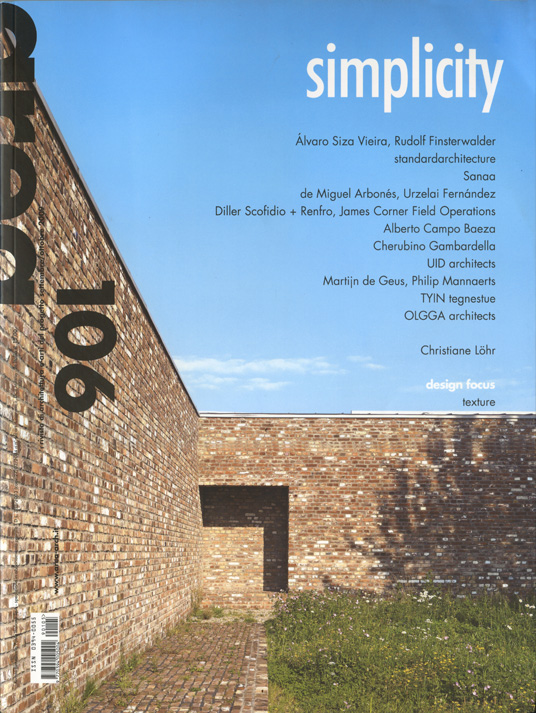
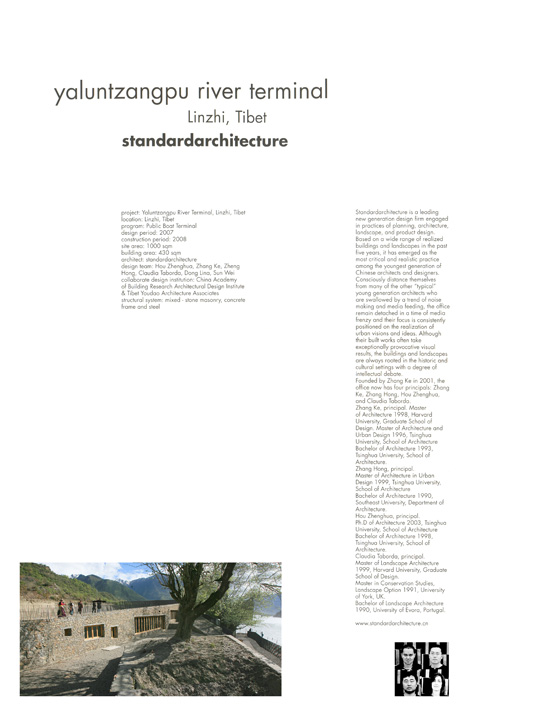
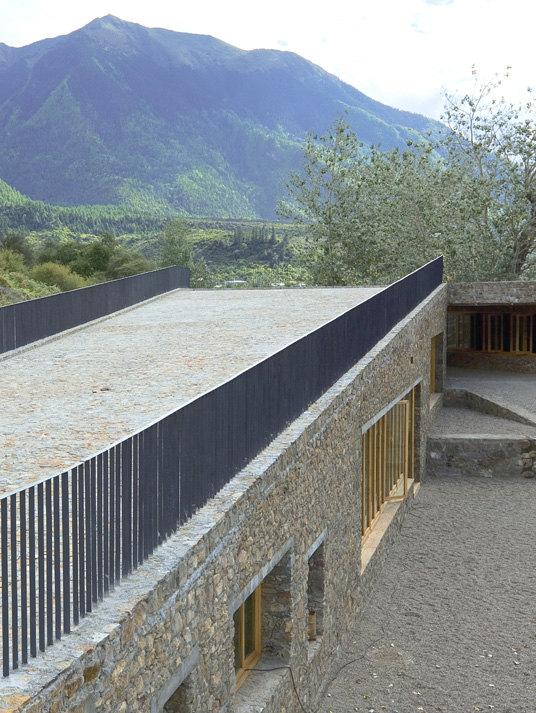
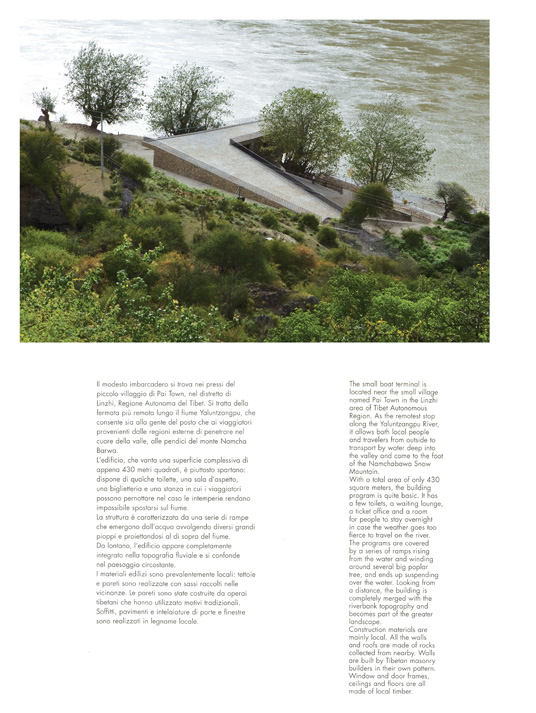
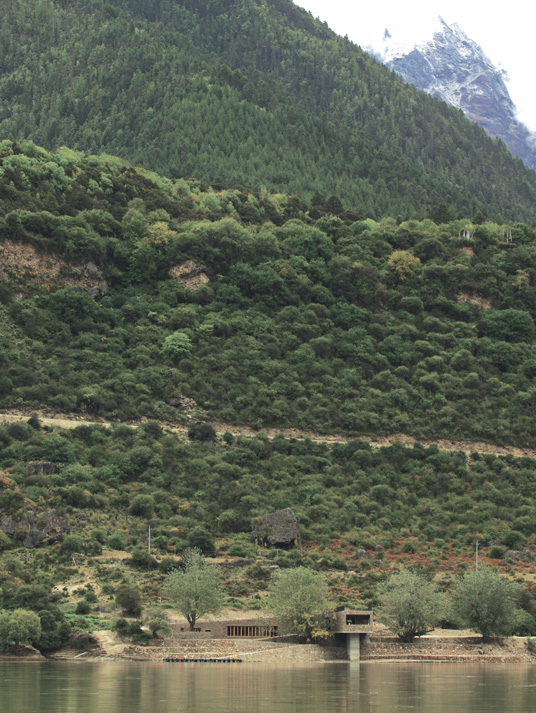
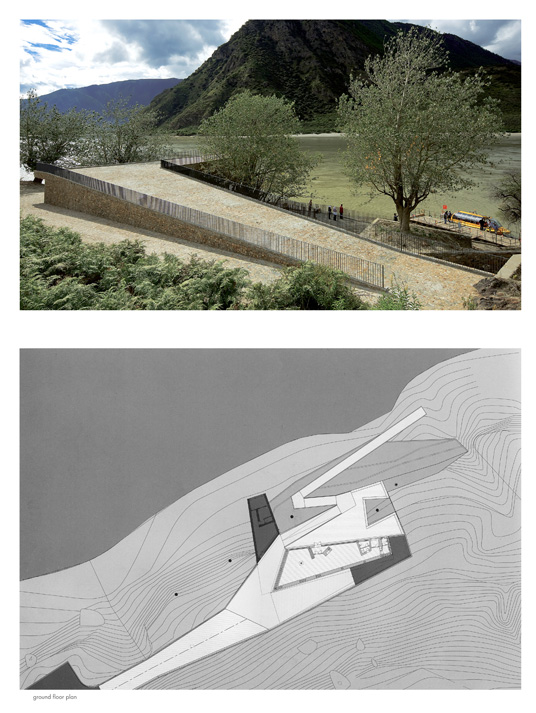

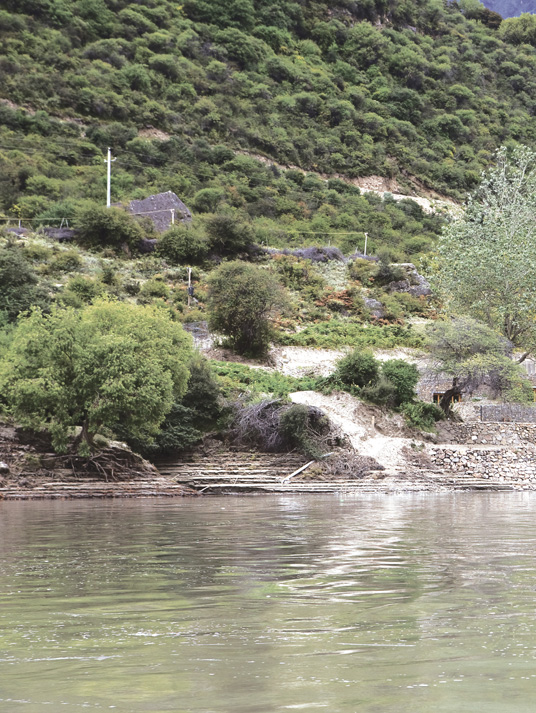
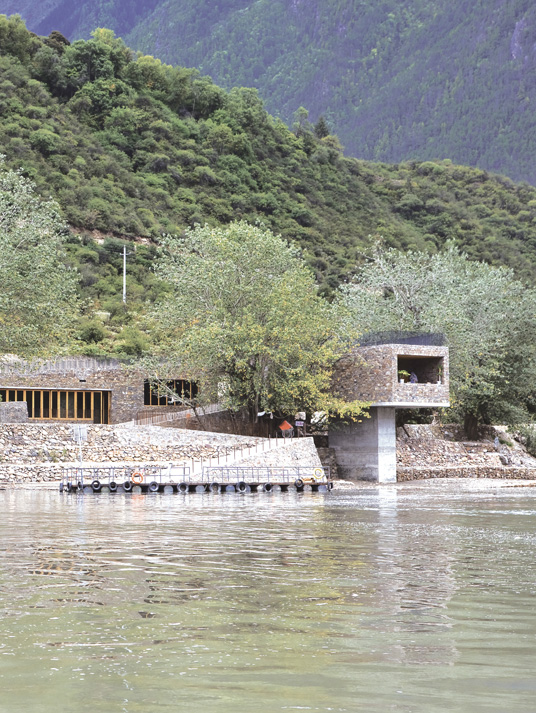
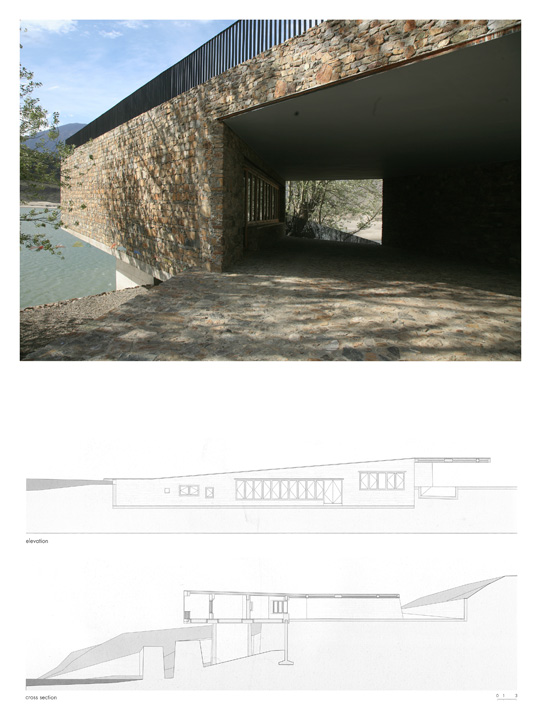
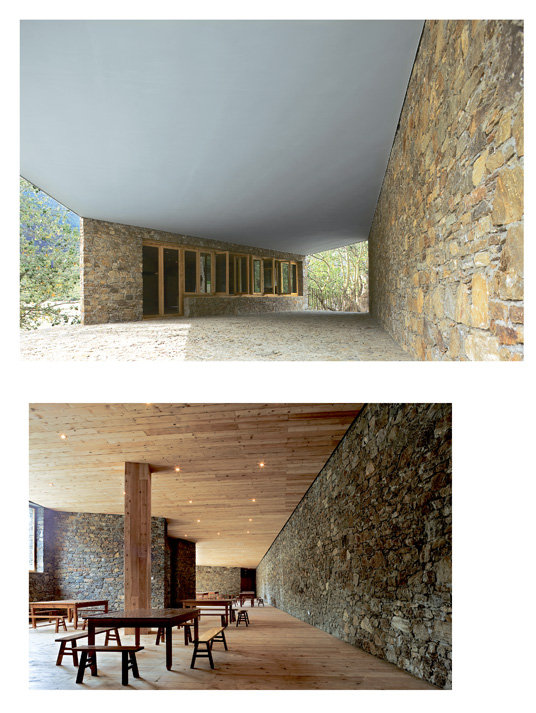
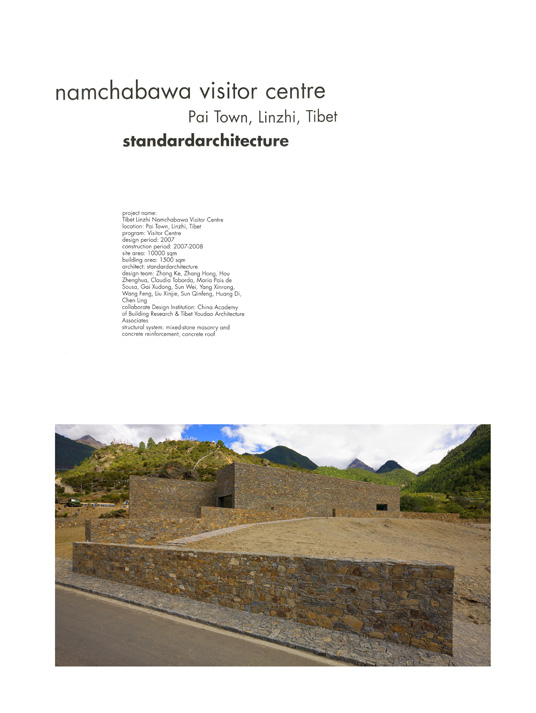
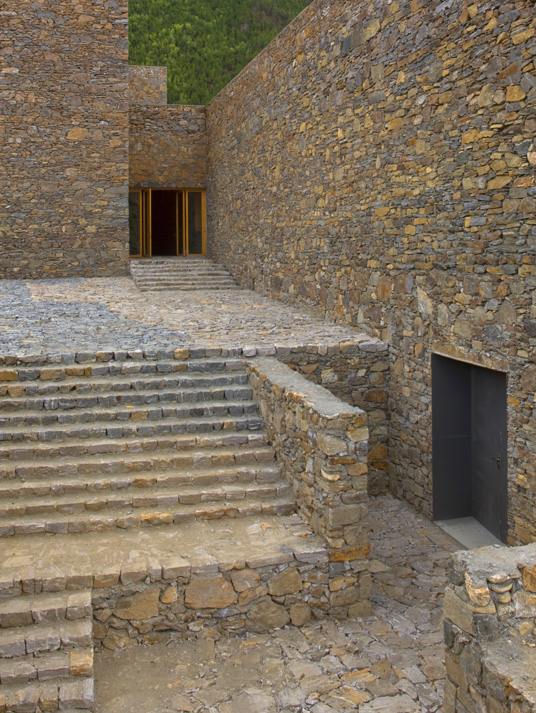
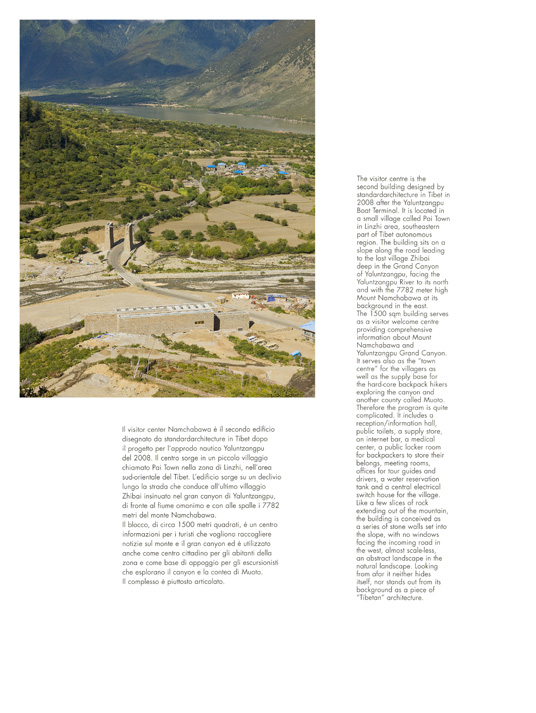

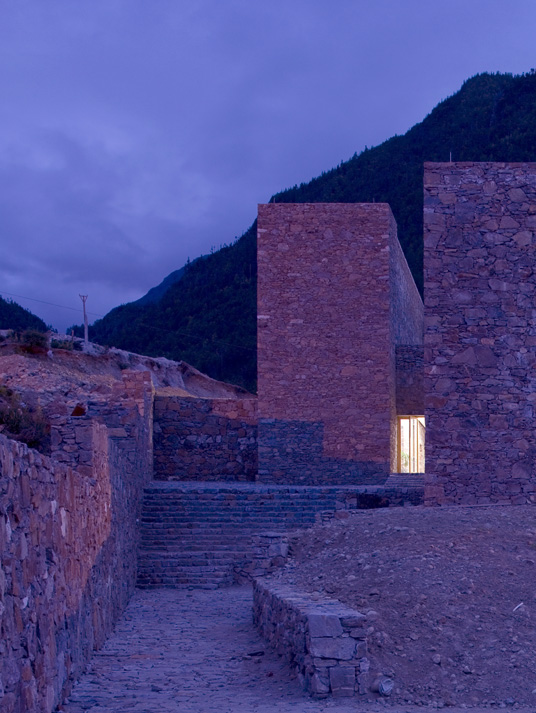
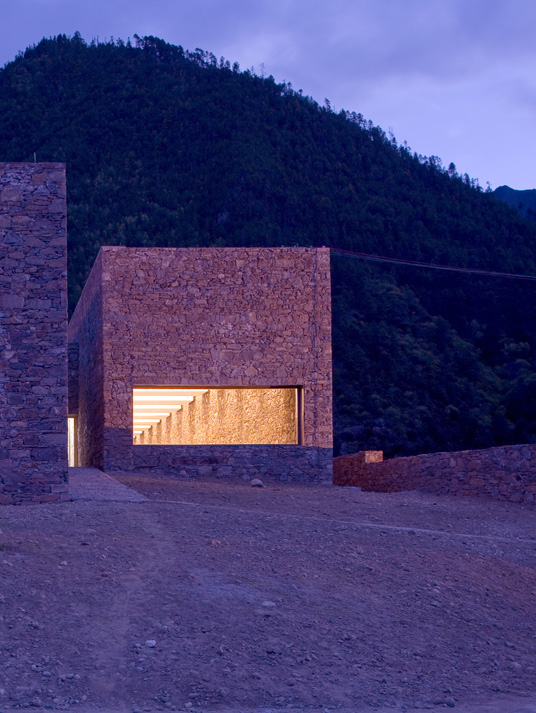
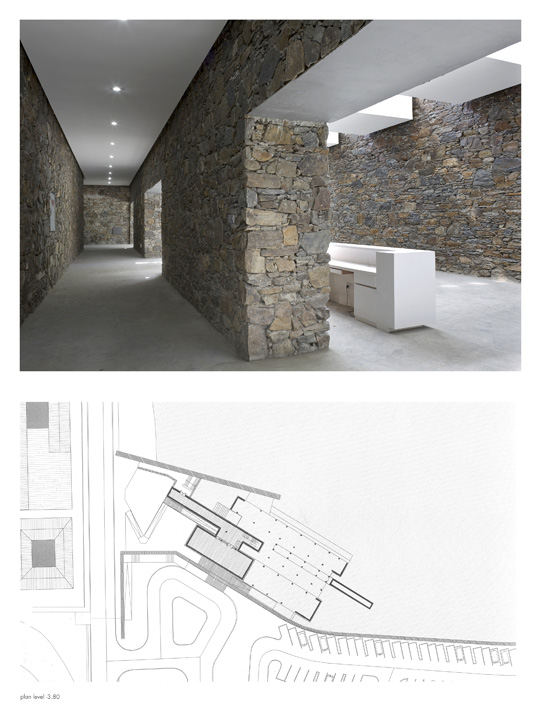
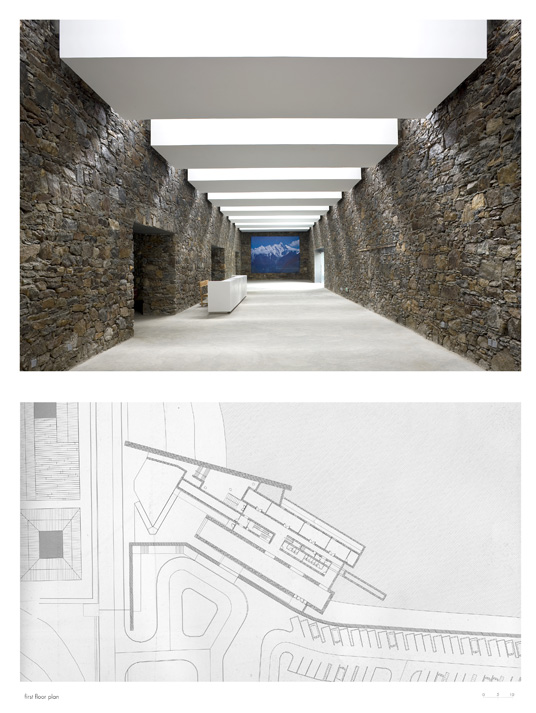
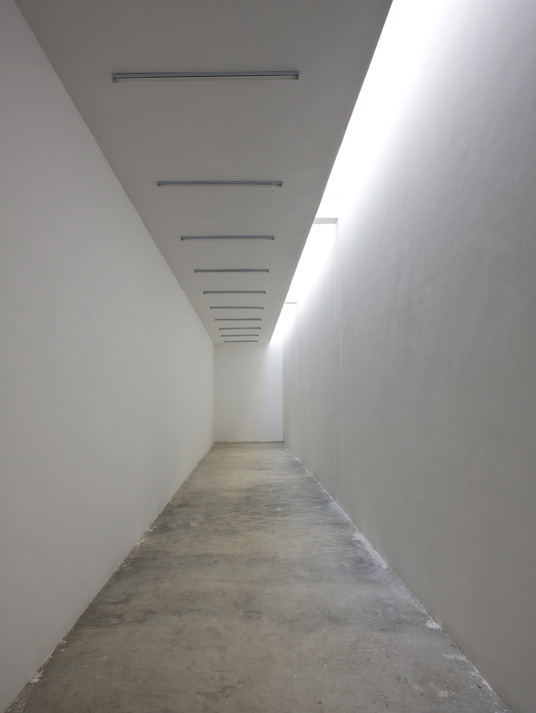
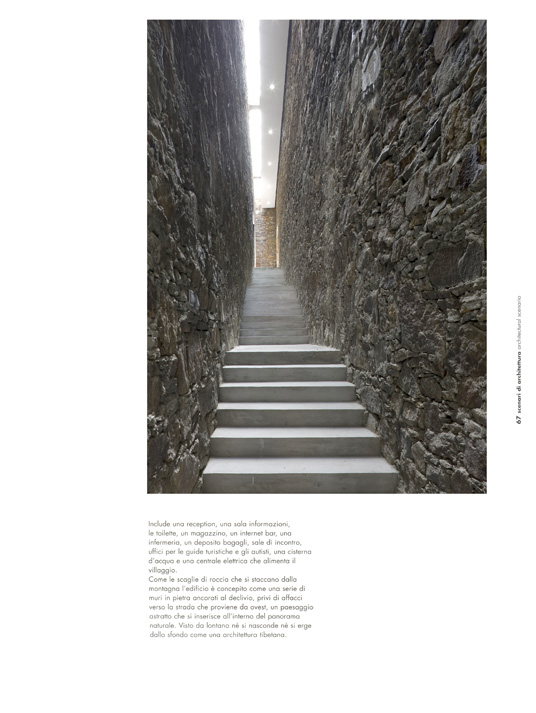
The small boat terminal is located near the small village named Pai Town in the Linzhi area of Tibet Autonomous Region. As the remotest stop along the Yaluntzangpu River, it allows both local people and travelers from outside to transport by water deep into the valley and come to the foot of the Namchabawa Snow Mountain.
With a total area of only 430 square meters, the building program is quite basic. It has a few toilets, a waiting lounge, a ticket office and a room for people to stay overnight in case the weather goes too fierce to travel on the river. The programs are covered by a series of ramps rising from the water and winding around several big poplar tree, and ends up suspending over the water. Looking from a distance, the building is completely merged with the riverbank topography and becomes part of the greater landscape.
Construction materials are mainly local. All the walls and roofs are made of rocks collected from nearby. Walls are built by Tibetan masonry builders in their own pattern. Window and door frames, ceilings and floors are all made of local timber.
Project Name: Yaluntzangpu River Terminal, Linzhi, Tibet
Location: Linzhi, Tibet
Program: Public Boat Terminal
Design period: 2007
Construction period: 2008
Site area: 1000 sqm
Building area: 430 sqm
Architect: standardarchitecture
Design Team: Hou Zhenghua, Zhang Ke, Zheng Hong, Claudia Taborda, Dong Lina, Sun Wei
Collaborate Design Institution: China Academy of Building Research Architectural Design Institute & Tibet Youdao Architecture Associates
Structural System: Mixed - Stone Masonry / Concrete Frame and Steel
Il modesto imbarcadero si trova nei pressi del piccolo villaggio di Pai Town, nel distretto di Linzhi, Regione Autonoma del Tibet. Si tratta della fermata più remota lungo il fiume Yaluntzangpu, che consente sia alla gente del posto che ai viaggiatori provenienti dalle regioni esterne di penetrare nel cuore della valle, alle pendici del monte Namcha Barwa.
L'edificio, che vanta una superficie complessiva di appena 430 metri quadrati, è piuttosto spartano: dispone di qualche toilette, una sala d'aspetto, una biglietteria e una stanza in cui i viaggiatori possono pernottare nel caso le intemperie rendano impossibile spostarsi sul fiume.
La struttura è caratterizzata da una serie di rampe che emergono dall'acqua avvolgendo diversi grandi pioppi e proiettandosi al di sopra del fiume.
Da lontano, l'edificio appare completamente integrato nella topografia fluviale e si confonde nel paesaggio circostante.
I materiali edilizi sono prevalentemente locali: tettoie e pareti sono realizzate con sassi raccolti nelle vicinanze. Le pareti sono state costruite da operai tibetani che hanno utilizzato motivi tradizionali. Soffitti, pavimenti e intelaiature di porte e finestre sono realizzati in legname locale.
Namchabawa Visitor Centre
The visitor centre is the second building designed by standardarchitecture in Tibet in 2008 after the Yaluntzangpu Boat Terminal. It is located in a small village called Pai Town in Linzhi area, southeastern part of Tibet autonomous region. The building sits on a slope along the road leading to the last village Zhibai deep in the Grand Canyon of Yaluntzangpu, facing the Yaluntzangpu River to its north and with the 7782 meter high Mount Namchabawa at its background in the east.
The 1500 sqm building serves as a visitor welcome centre providing comprehensive information about Mount Namchabawa and Yaluntzangpu Grand Canyon. It serves also as the “town centre” for the villagers as well as the supply base for the backpack hikers exploring the canyon. Therefore the program is quite complicated. It includes a reception/information hall, public toilets, a supply store, an internet bar, a medical center, locker room for backpackers, meeting rooms, offices for tour guides and drivers, a water reservation tank and a central electrical switch house for the village.
Like a few slices of rock extending out of the mountain, the building is conceived as a series of stone walls set into the slope, with no windows facing the incoming road in the west, almost scale-less, an abstract landscape in the natural landscape. Looking from afar it neither hides itself, nor stands out from its background as a piece of “Tibetan” architecture.
Project Name: Tibet Namchabawa Visitor Centre
Location: Pai Town, Linzhi, Tibet
Program: Visitor Centre
Design period: 2007
Construction period: 2007-2008
Site area: 10000 sqm
Building area: 1500 sqm
Architect: standardarchitecture
Design Team: Zhang Ke, Zhang Hong, Hou Zhenghua, Claudia Taborda, Maria Pais de Sousa, Gai Xudong, Sun Wei, Yang Xinrong, Wang Feng, Liu Xinjie, Sun Qinfeng, Huang Di, Chen Ling
Collaborate Design Institution: China Academy of Building Research & Tibet Youdao Architecture Associates
Structural System: Mixed - Stone Masonry and Concrete Reinforcement, Concrete Roof
Il visitor center Namchabawa è il secondo edificio disegnato da standardarchitecture in Tibet dopo il progetto per l'approdo nautico Yaluntzangpu del 2008. Il centro sorge in un piccolo villaggio chiamato Pai Town nella zona di Linzhi, nell'area sud-orientale del Tibet. L'edificio sorge su un declivio lungo la strada che conduce all'ultimo villaggio Zhibai insinuato nel gran canyon di Yaluntzangpu, di fronte al fiume omonimo e con alle spalle i 7782 metri del monte Namchabawa.
Il blocco, di circa 1500 metri quadrati, èun centro informazioni per i turisti che vogliono raccogliere notizie sul monte e il gran canyon ed è utilizzato anche come centro cittadino per gli abitanti della zona e come base di appoggio per gli escursionisti che esplorano il canyon e la contea di Muoto.
Il complesso è piuttosto articolato. Include una reception, una sala informazioni, le toilette, un magazzino, un internet bar, una infermeria, un deposito bagagli, sale di incontro, uffici per le guide turistiche e gli autisti, una cisterna d'acqua e una centrale elettrica che alimenta il villaggio.
Come le scaglie di roccia che si staccano dalla montagna l'edificio è concepito come una serie di muri in pietra ancorati al declivio, privi di affacci verso la strada che proviene da ovest, un paesaggio astratto che si inserisce all'interno del panorama naturale. Visto da lontano né si nasconde né si erge dallo sfondo come una architettura tibetana.